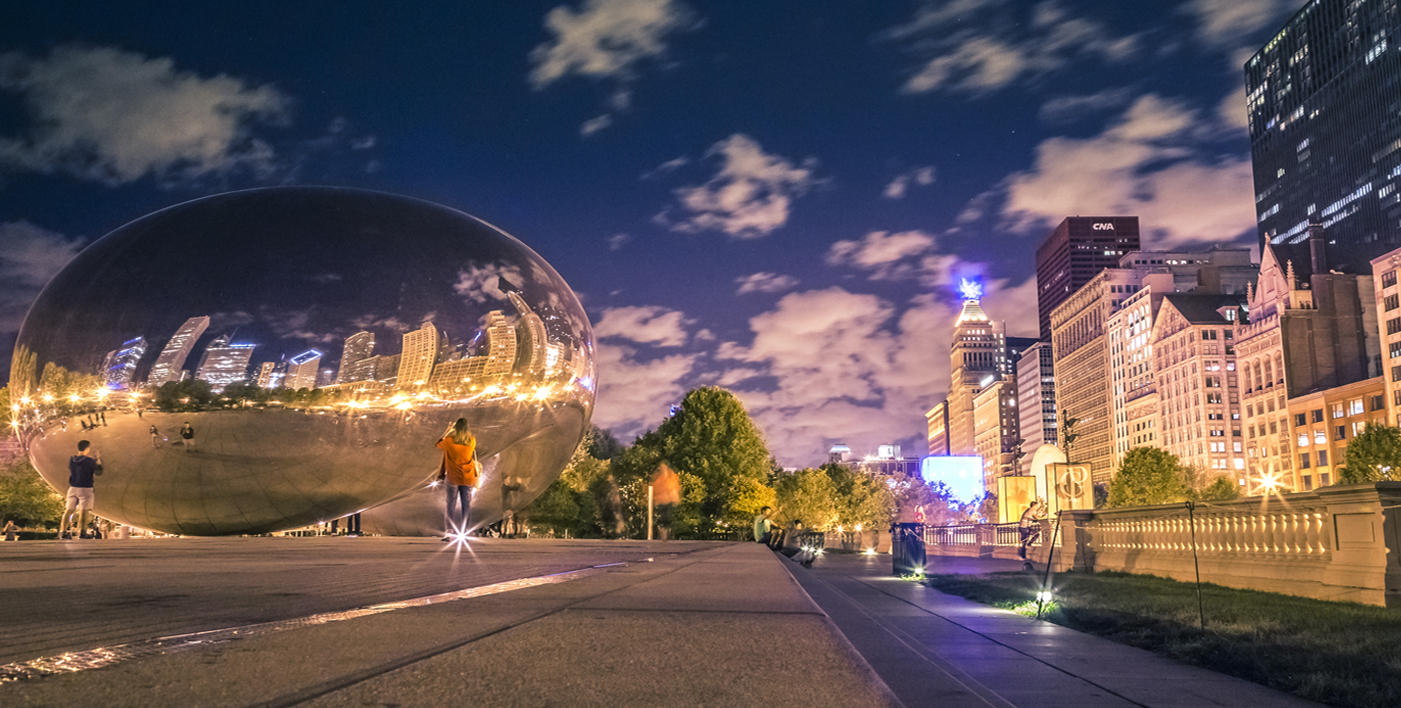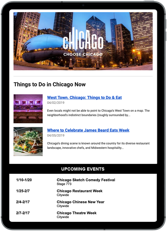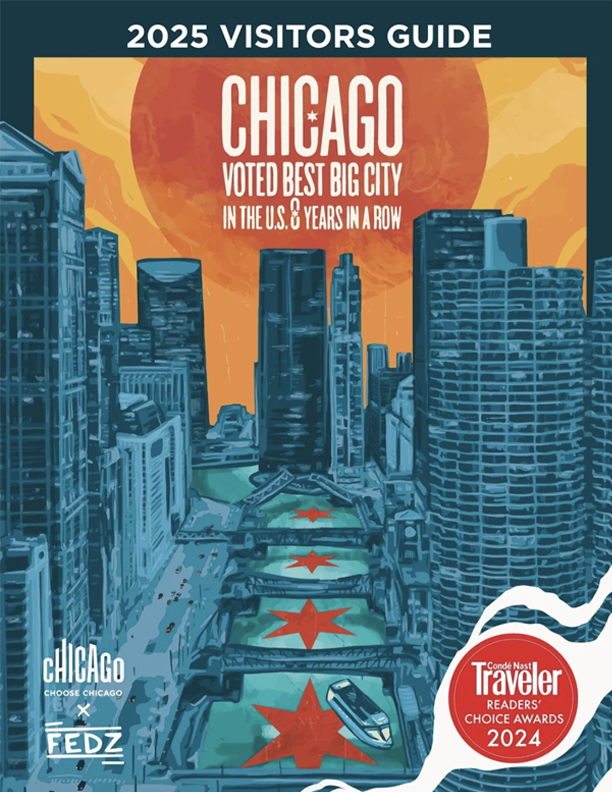While in Chicago, experience Wright’s architectural vision of unity, simplicity, and beauty, which launched a truly American architecture style at the beginning of the 20th century.
TheFrank Lloyd Wright Trust’s mission is to engage, educate, and inspire visitors, offering everything fromtours of five local Frank Lloyd Wright sites to publicprograms, internationaltravelopportunities, and the annualWright Plus Housewalk each May.
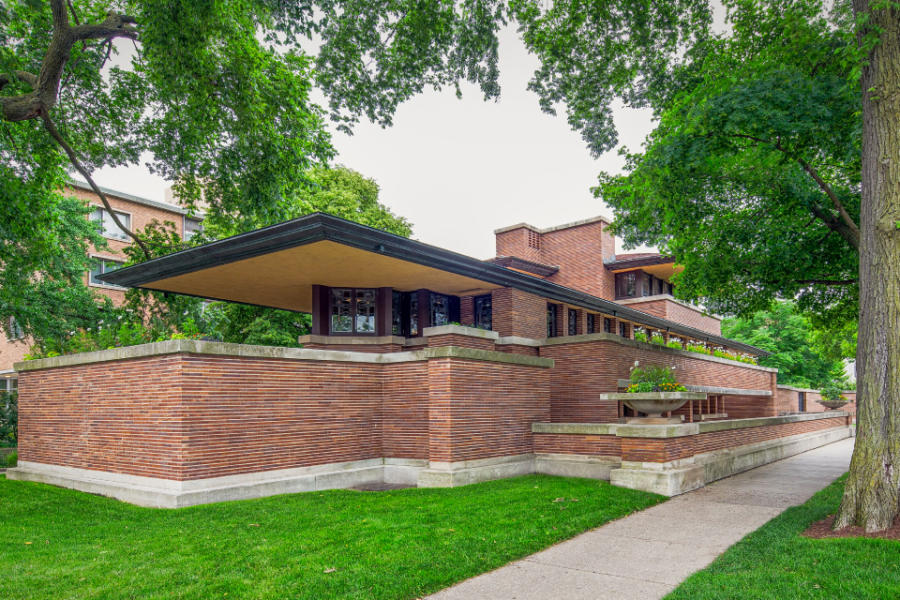
Frank Lloyd Wright Tours
The Frank Lloyd Wright Trust interpretivetours, led by more than 650 knowledgeable volunteers, are lauded as world-class tours for Wright aficionados. The Trust offers guided tours of five Chicago-area masterpieces that are considered some of Wright’s greatest works.
- An excellent starting point is theFrank Lloyd Wright Home and Studio in west suburban Oak Park’s Frank Lloyd Wright Historic District, home to the world’s largest collection of Wright-designed buildings. It’s here that Wright lived and worked during the first 20 years of his career, from 1889 to 1909, and consequently where American architecture was born. During this time, Wright developed his groundbreaking Prairie style of architecture, using the Home and Studio as a laboratory to experiment with space, light, furnishings, and decorative arts.
- The nearbyUnity Temple, part of the UNESCO World Heritage List, is one of the innovative Prairie-style structures that Wright designed in his Oak Park Studio. Reopened in 2017 after a meticulous restoration, the Unity Temple is the only surviving public building from Wright’s Prairie period. Unity Temple’s bold design incorporates unconventional materials, with industrial concrete used for the exterior, while the interior features beautiful skylit spaces.
- The iconicFrederick C. Robie House is located on The University of Chicago campus in Chicago’s Hyde Park neighborhood. The Robie House was named by the American Institute of Architects as one of the 10 most significant structures of the 20th century, and it’s also part of theUNESCO World Heritage List. Wright’s Prairie-style masterpiece is considered to be the precursor of modernism in architecture, with its bold horizontal lines, daring cantilevers, ribbons of leaded glass windows, and wide-open floor plan. A recently completed interior restoration has returned the Robie House to its glorious 1910 original appearance.
- The 11-storyRookery Building in downtown Chicago was the tallest building in the world when it was unveiled by renowned architecture firm Burnham and Root in 1888. Wright had an office located in the Rookery, and in 1905 he was commissioned to update the interior design of its light court and lobbies. Wright remained sensitive to Root’s original vision, unifying the luxurious light-filled lobbies and stunning central court. The Rookery is listed on the National Register of Historic Places and is an official Chicago landmark.
- TheEmil Bach House, located in Chicago’s Rogers Park neighborhood, was built in 1915 for Emil Bach, president of the Bach Brick Co. Unlike Wright’s expansive suburban Prairie homes, the Emil Bach House is self-contained, standing on a small city lot along a busy thoroughfare. Though compact, the home’s design exudes the Prairie style but includes more modern touches, as seen in its window design and organic floor plan. Beautifully restored to its original appearance, the Emil Bach House is listed on the U.S. Register of Historic Places and is a designated Chicago landmark.
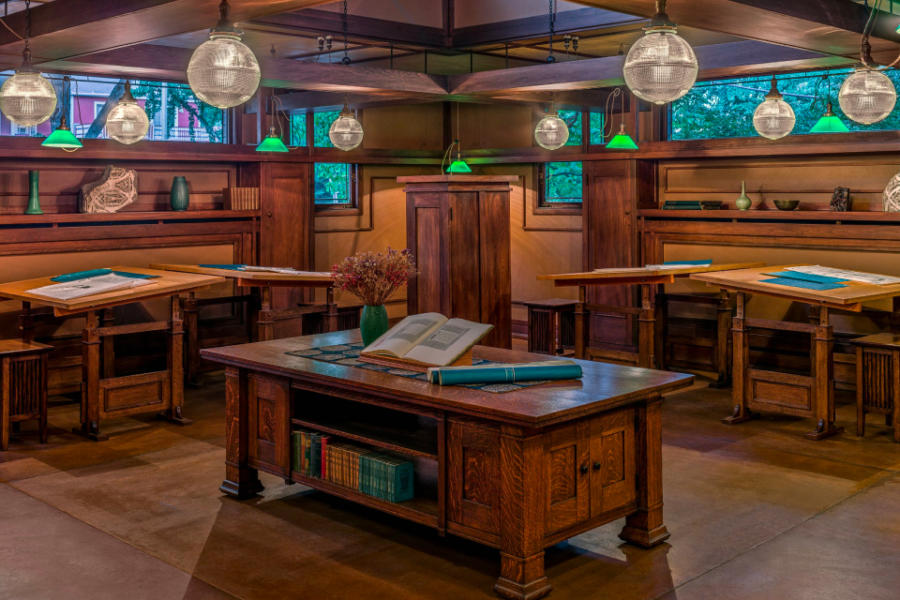
More ways to experience Wright around Chicago
In addition to site and themed tours — such as thePedal Oak Park bicycle tour andWright Around Chicago bus tour — there are plenty of other ways to learn about and experience Frank Lloyd Wright’s architecture. Regular publicprograms include everything from local lectures to workshops.
The popular annualWright Plus Housewalk in May gives visitors a peek inside the private homes and public buildings designed by Wright and his contemporaries in the Oak Park area. And if you’re interested in exploring Wright’s global design influence, the Frank Lloyd Wright Trust hostsTravel Wright journeys that take architecture enthusiasts on guided private tours around the world.
Bring a little piece of Frank Lloyd Wright home by shopping at one of the three museum stores or visitingShopWrightonline.







